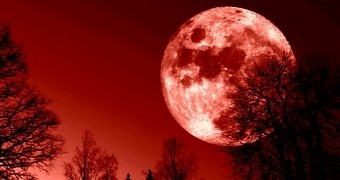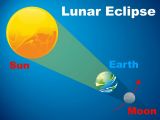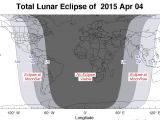The universe seems intent on keeping us entertained these days. On March 20, we got to feast our eyes on a total solar eclipse. Come Saturday, April 4, we'll witness a total lunar eclipse.
The total solar eclipse that happened just weeks ago occurred when the Moon passed in front of the Sun and hid its entire silhouette from view, leaving just a bright circle, i.e. the star's corona, shining bright above our heads.
During the April 4 eclipse, the Moon will move into Earth's shadow. When this happens, the satellite will appear to us - well, to those watching the sky from the perfect location - as a gorgeous red orb.
Well, when should we ready our binoculars?
NASA scientists say that Saturday's total lunar eclipse will begin at 3:16 a.m. Pacific Daylight Time, when the Moon will begin to steadily but surely creep into our planet's shadow.
It will be about an hour and 45 minutes before Earth's shadow completely engulfs the Moon and the eclipse officially becomes a total one. This time, totality will only last for about 5 minutes.
This is because, rather than move straight through our planet's shadow, the Moon will only traverse its outskirts. If this weren't the case, totality could have lasted for well over an hour.
Since the total lunar eclipse will only last for a few minutes, those hoping to catch a glimpse of it might want to make sure that their eyes are fixed on the sky no later than 4:58 a.m. Pacific Daylight Time.
As was the case with the total solar eclipse earlier this month, not everybody across the world will get to watch the Moon move into Earth's shadow and be transformed by it into a blood red sphere.
Check out the diagram included in the gallery below to get a better idea of how Saturday's total lunar eclipse will appear to people across the globe.
How the eclipse will transform the Moon
During the eclipse, Earth will stand between the Sun and the Moon. When this happens, the view of our planet from the surface of the Moon will be that of a sphere whose rim is on fire.
The light coming from this fiery rim, essentially that of every sunrise and sunset happening across the world, will seep into the planet's shadow and make the Moon appear red when observed from Earth.
“This incredible light beams into the heart of Earth's shadow, filling it with a coppery glow and transforming the Moon into a great red orb when viewed from Earth,” NASA scientists explain.
Should you miss this week's total lunar eclipse, you'll get the chance to witness another one about 6 months from now, on September 28.

 14 DAY TRIAL //
14 DAY TRIAL // 


